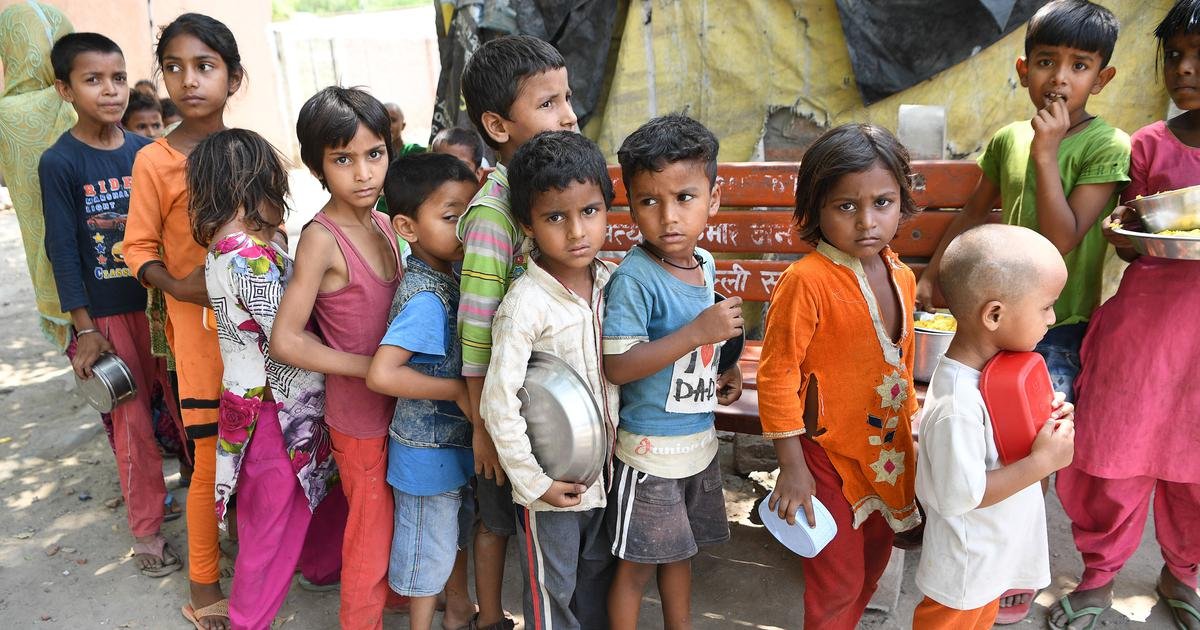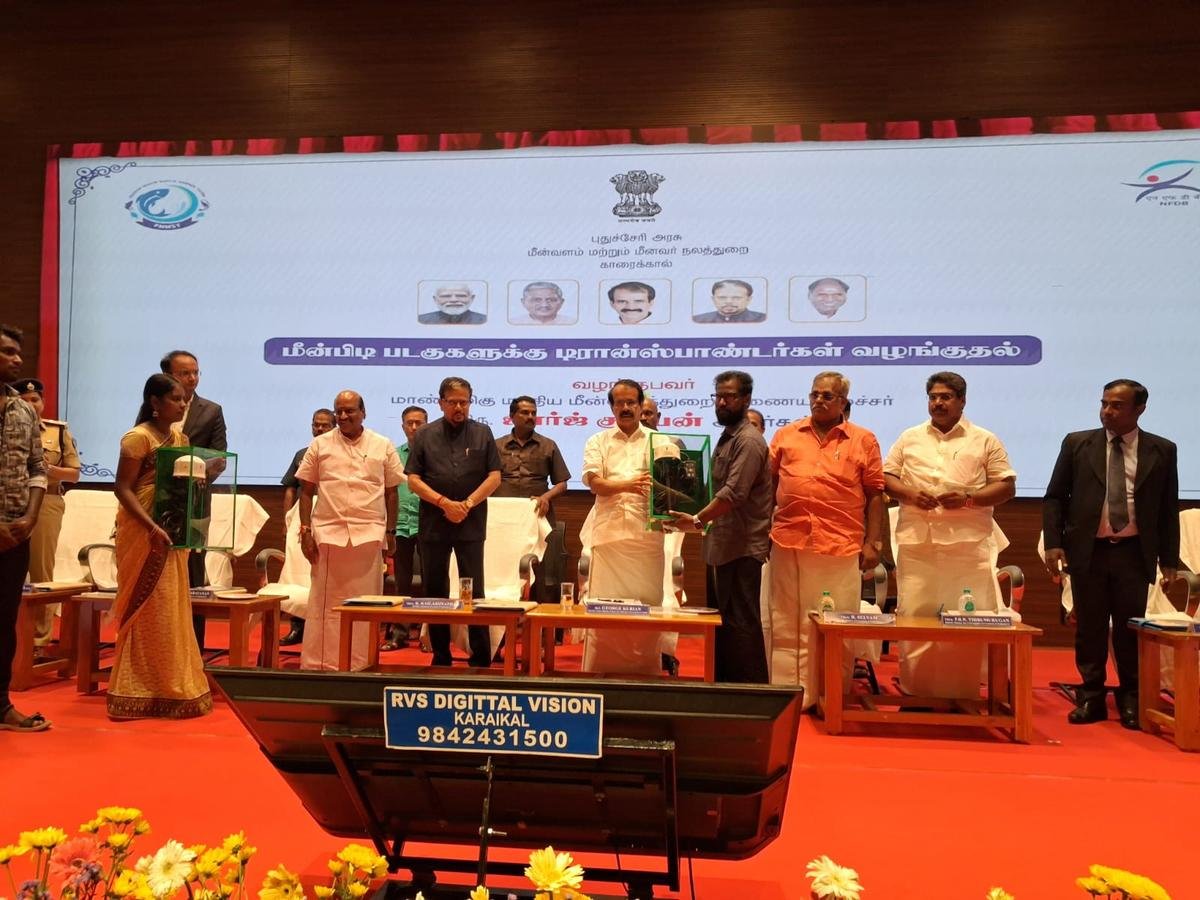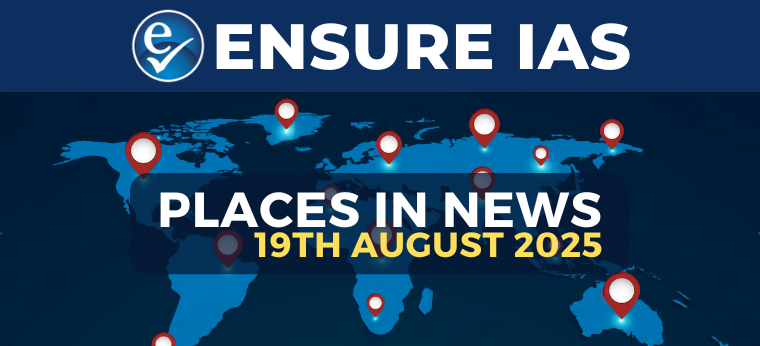Why in the News?
- The United Nations’ report “The State of Food Security and Nutrition in the World 2025” highlights a decline in global undernourishment.
- India has played a decisive role in this global progress through major policy and technological interventions in food security and nutrition.
Key Highlights
- Global Undernourishment Trends
- Global chronic undernourishment declined from 688 million in 2023 to 673 million in 2024 (8.2% of world population).
- Still above pre-pandemic levels of 7.3% (2018), but reversal signals positive momentum.
- India’s Contribution to Progress
- Prevalence of undernourishment in India fell from 3% (2020–22) to 12% (2022–24).
- This translates into 30 million fewer people living with hunger despite pandemic disruptions.
- Transformation of Public Distribution System (PDS)
- Revamped through digitalisation, Aadhaar-enabled targeting, and biometric authentication.
- One Nation One Ration Card ensured portability of entitlements, benefiting migrants.
- Electronic point-of-sale systems improved efficiency and reduced leakages.
- Focus Shifting from Calories to Nutrition
- 60% of population still cannot afford a healthy diet due to high cost of nutrient-rich foods and weak cold-chain infrastructure.
- Initiatives like PM Poshan (2021) and ICDS now stress dietary diversity and nutrition sensitivity.
- Structural Issues
- Rising malnutrition, obesity, and micronutrient deficiencies despite falling hunger rates.
- High cost of healthy diets for 60% of population
- Post-harvest food losses (13%)
- Overreliance on calorie-based programs
- Limited role of small farmers and women entrepreneurs
- Next Steps (Way Forward)
- Agri-food system transformation needed:
- Boost production of pulses, fruits, vegetables, and animal products.
- Reduce 13% food loss through post-harvest infrastructure (cold storage, logistics).
- Agri-food system transformation needed:
- Promote FPOs and women-led enterprises for inclusive growth.
- Leverage digital tools like AgriStack, e-NAM for planning and delivery.
- improve supply chains and strengthen market linkages
- Promote nutrition-sensitive agriculture and food fortification
- Enhance dietary diversity through programs like PM Poshan and ICDS
| Overview of India’s Public Distribution System (PDS) 1. Government-run initiative to provide essential commodities at subsidized rates to the underprivileged. 2. Operates through a network of Fair Price Shops (FPS). 3. Key commodities include rice, wheat, sugar, kerosene, and cooking oil. 4. Food grains are procured from farmers at a Minimum Support Price (MSP) and distributed at discounted rates. 5. Acts as a buffer against inflation and ensures food security for the poor. Evolution of PDS 1. World War II: Introduced as a rationing mechanism. 2. Pre-1960s: Relied heavily on imported food grains. 3. 1960s Expansion: a. Triggered by food shortages and rising prices. b. Establishment of Agricultural Prices Commission and Food Corporation of India to boost domestic procurement and storage. 4. 1970s: Became a nationwide subsidized food distribution programme. 5. 1992 – RPDS: a. Revamped Public Distribution System launched. b. Aimed to reach remote, hilly, and rural areas. 6. 1997 – TPDS: a. Targeted Public Distribution System introduced. b. Beneficiaries categorized into: i. BPL (Below Poverty Line) ii. APL (Above Poverty Line) 7. 2000 – AAY: a. Antyodaya Anna Yojana launched for the poorest of the poor. b. Provided 25 kg/month (later increased to 35 kg) at Rs 2/kg for wheat and Rs 3/kg for rice. c. Expanded between 2003–2006 to include 1.5 crore additional vulnerable individuals. 8. 2013 – NFSA: a. National Food Security Act enacted. b. Guaranteed 5 kg of food grains per person per month to ~82 crore people. Functioning of PDS 1. The central government allocates wheat, rice, sugar, and kerosene to States/UTs. 2. States encouraged to include additional items like: a. Pulses, salt, candles, matchboxes, clothing, school supplies, etc. 3. Especially vital for remote communities with limited market access and monopolistic local shopkeepers. 4. Some states have set up Civil Supplies or Essential Commodities Companies to: a. Procure additional goods directly from producers. b. Use PDS infrastructure to sell them below market prices. 5. Central government supplies six essential commodities: a. Rice, wheat, sugar, edible oil, soft coke, and kerosene oil. |
Implications
- For Global Hunger Reduction: India’s success provides a replicable model for the Global South, showcasing scalability of digital solutions and governance reforms.
- For SDG 2 (Zero Hunger): With only five years left to meet SDG targets, India’s momentum is crucial to global progress on hunger elimination.
- For Social Protection and Governance: Innovations in PDS, portability, and digital delivery strengthened India’s social safety net during crises.
- For Agriculture and Economy
- Demand for nutrition-sensitive agriculture creates opportunities in horticulture, livestock, and agri-tech sectors.
- Investment in cold-chain infrastructure and logistics can reduce losses and improve affordability.
- For Health and Nutrition Policy
- Shift from quantity to quality in food programs is essential to tackle malnutrition and hidden hunger.
Conclusion
India’s recent success in reducing hunger is a significant milestone for both national and global food security. However, the focus must now shift from simply feeding people to nourishing them, ensuring access to affordable, diverse, and nutritious diets. By strengthening agri-food systems, leveraging digital innovations, and maintaining inclusive growth, India can continue to lead the global movement towards ending hunger and achieving SDG 2 by 2030.
| EnsureIAS Mains Question Q. What are the implications of persistent malnutrition and hidden hunger in India on social and economic development? Suggest a multi-pronged strategy to address these issues. (250 Words) |
| EnsureIAS Prelims Question Q. With reference to the National Food Security Act (NFSA), 2013, consider the following statements: 1. It provides legal entitlement to subsidized food grains under Targeted Public Distribution System (TPDS). 2. It mandates nutritional support to pregnant women, lactating mothers, and children. 3. It is implemented by the Ministry of Women and Child Development. Which of the above statements is/are correct? Answer: b) 1 and 2 only |




